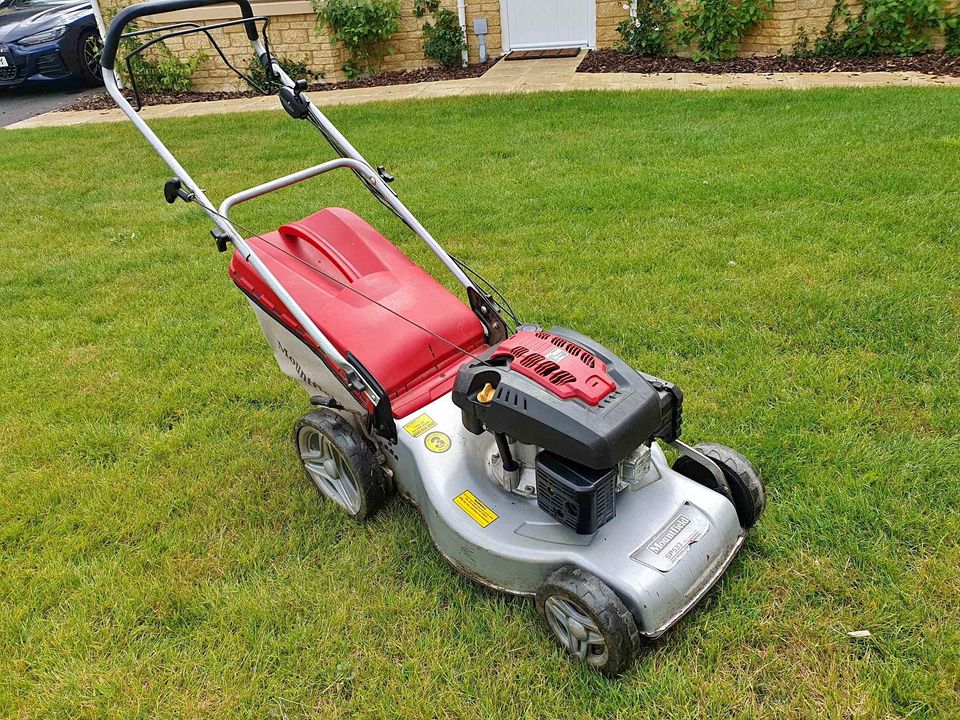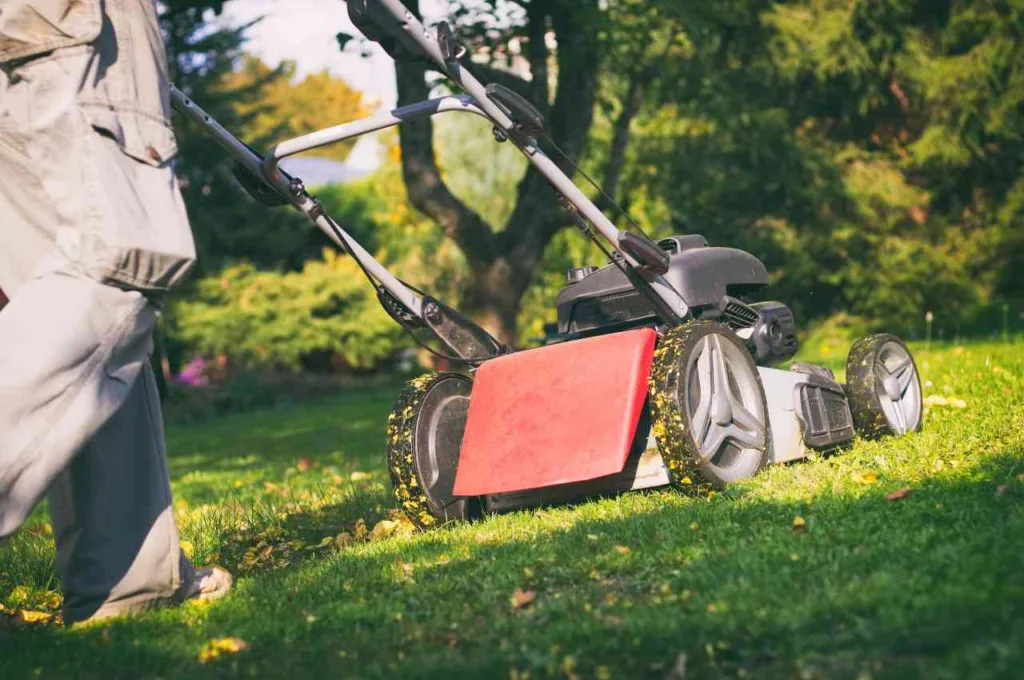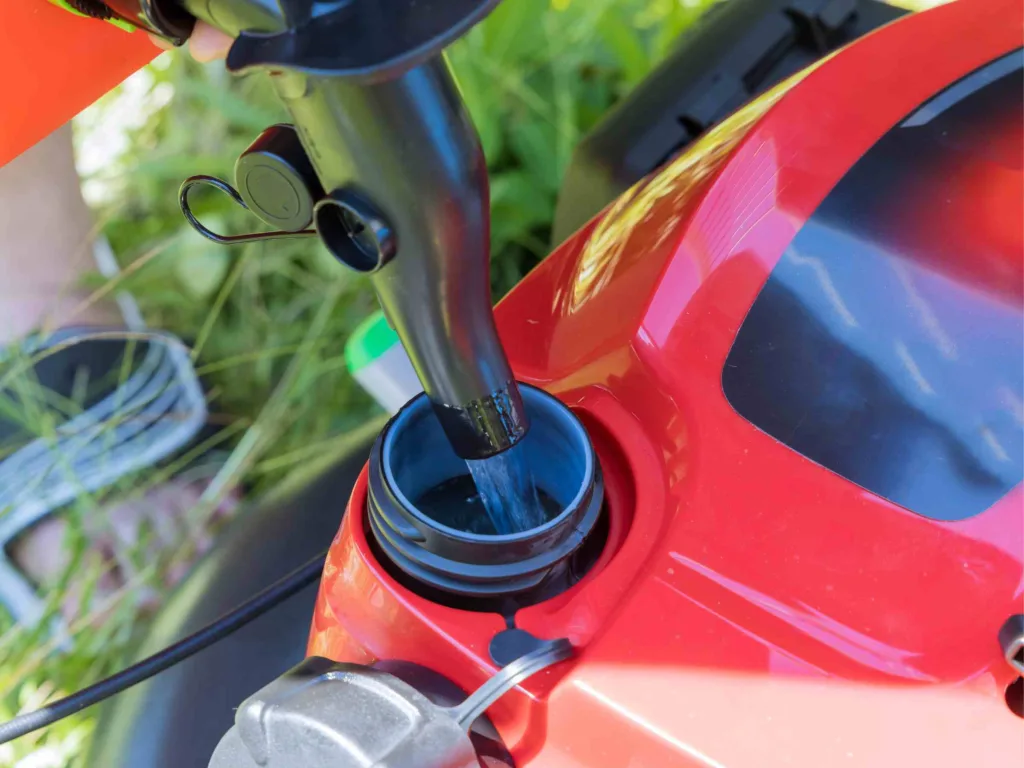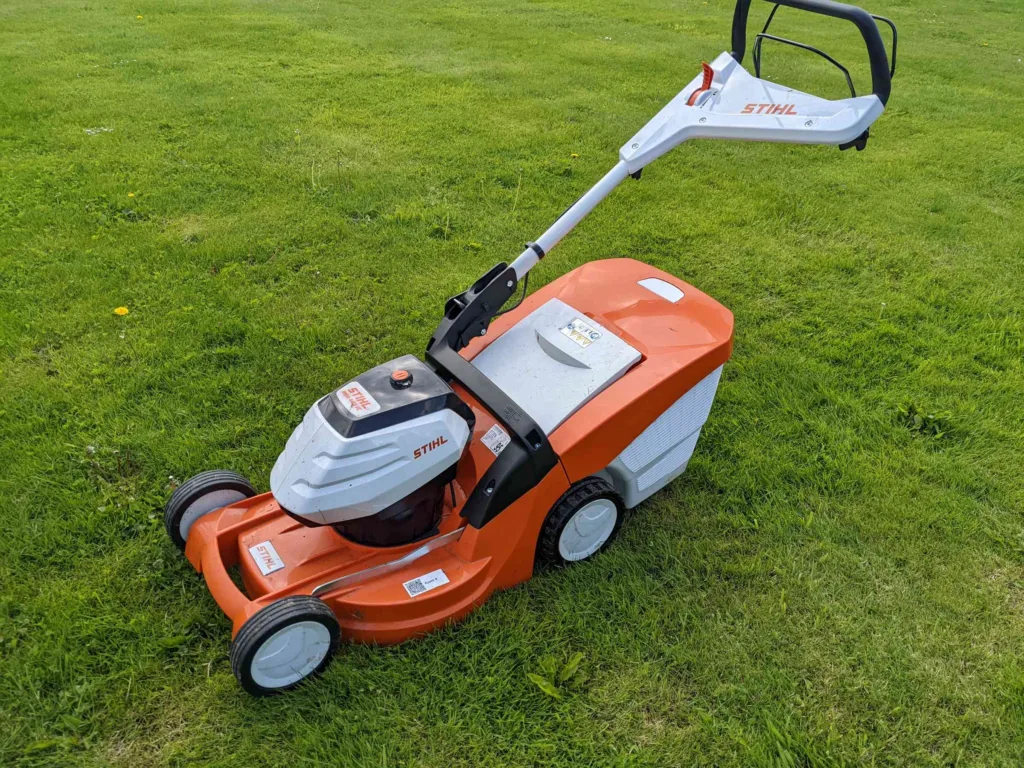Before you buy a self-propelled lawn mower, you might be wondering how fast one of these mowers moves.
It’s important to consider the forward speed of a self-propelled lawn mower so that you can compare the mower speed to your walking pace, then decide whether this mower type is suitable for you.
✅Key Takeaways:
Most self-propelled lawn mowers operate at a speed of 1.5 to 4 miles per hour.
This is about the pace of a moderate-to-brisk walk.
Engine power and cleanliness, terrain type, fuel quality, and mower power type can all affect the speed of self-propulsion.
Table of Contents
🤷♂️ What Is A Self-Propelled Mower’s Forward Speed?
The average speed of a self-propelled lawn mower is 1.5 to 3.5 mph (miles per hour).
The speed of a mower varies depending on the model. Some self-propelled lawn mowers have a variable speed setting that lets you make the mower faster or slower. Most self-propelled mowers for domestic use have a set speed, which is close to a fast walking pace.
Read More: How Do Self Propelled Lawn Mowers Work?
🏎 How Fast Does A Self-Propelled Mower Go?
The fastest speed of a self-propelled push mower is around 3.5-4 miles per hour. Rarely, a lawn mower may have a maximum speed of up to 5-6 mph (the speed of a very brisk walk).
Self-propelled mowers have a speed limit that you can’t easily surpass. This is to keep you safe – you wouldn’t want to accidentally put the mower on full speed and have it race away from you at a sprinting pace.

🧐 How Much Faster Is Self-Propelled Mowing Versus Push Mowing?
Self-propelled mowing is, for most adults, about the same speed as a fast walking pace.
We worked this out by comparing the average walking speed with the average speed of a self-propelled lawn mower:
The average walking pace of an adult is about 3-4 miles per hour.
The average speed of a self-propelled mower is 1.5 to 3.5 miles per hour.
That means, on average, most mowers with self-propulsion should operate at a speed that’s equal to, or slightly slower than, your average walking pace.
Of course, these are just averages. You may walk faster or slower than the average person based on your age and health status, and the length of your stride.
If you’re buying a fixed-speed mower, we recommend going for one with a forward speed of 3-4 miles per hour. It’s best to buy a mower with a variable speed self-propelled option if you want the option to take your mowing at a slower pace.

📑 Factors That Affect The Speed Of A Self-Propelled Lawn Mower
Here are some of the factors that affect the speed of a self-propelled lawn mower.
🦾 Engine Power
A mower’s engine power, measured in cubic centimetres (cc), refers to the amount of energy the engine can generate to spin the mower’s cutting blades and propel the mower forward.
The average power range for domestic petrol mower engines is 125cc to 190cc. The engine power is usually linked to the mower size: the larger the mower, the bigger the engine.
A mower with a bigger engine can deliver more power to its self-propulsion function, allowing the mower to move faster.
Of course, there’s a limit to the speed of self-propulsion. Even a push mower with the most powerful engine will only move at a speed that’s deemed safe for human use, so don’t be concerned that you’ll have to sprint to keep up with your ultra-powerful mower!
⛽️ Fuel Quality
Fuel quality is another factor that affects the speed of a self-propelled lawn mower.
Poor-quality or low-grade fuel may block the mower’s fuel lines, reducing how much fuel can travel into the motor. This will hinder the mower’s performance and possibly reduce its speed of self-propulsion.
The same goes for lawn mowers as for cars – the better quality the fuel, the better the overall performance. Look for clean, fresh, unleaded fuel for your lawn mower, with an octane rating of at least 87 (91 RON). We’ve always had a great experience with the Aspen 4 alkylate 4-stroke petrol (<Amazon link), which has a 95 RON.

🧹 Engine Cleanliness
How clean do you keep your mower? This also affects the mower’s performance and the speed of self-propulsion.
We all know that a lawn mower ends up pretty dirty after a lot of use. Grass finds its way into all the cracks and crevices, including the mower’s engine.
A dirty engine will suffer in performance. The mower needs to be able to suck in air that can be combined with fuel, as with every internal combustion engine. If the mower’s ability to do this is hindered, the engine power will be reduced, and the maximum forward speed of its self-propulsion will be slower.
Thankfully, this issue is easy enough to resolve – just turn the mower off and wait for the engine to cool, then drain the fuel, flip the mower over, and clean the engine out thoroughly.
🌄 Terrain & Grass Height
The terrain and grass thickness/height may affect the forward speed of your self-propelled lawn mower.
Thicker, longer grass creates more resistance. Imagine walking through knee-high grass. You’ll agree that it’s harder than walking through grass that’s only as tall as the top of your shoes, and the same analogy applies when mowing your lawn.
The resistance of longer grass may reduce the speed of your self-propelled mower, although likely not by a lot. Your mower’s self-propulsion speed is more likely to be affected by longer grass if it has a less powerful engine. Most self-propelled petrol mowers won’t have a problem with longer grass, but some cordless mowers might.

🔌 Mower Power Type
The type of power that’s used in a self-propelled lawn mower affects how much power can be used in the self-propulsion system.
There are two types of self-propelled mowers: petrol mowers (the most common type) and battery-powered mowers (less common but gaining popularity).
Petrol-powered mowers are the most powerful choice. In lawn mowers, petrol is superior to any other power source, and petrol engines are powerful enough to allow for faster self-propulsion speeds.
Battery-powered mowers must converse power wherever possible because they have a limited battery power source. The maximum forward speed of a battery-powered mower is lower – around 2.5-3 miles per hour.

Battery Powered Lawn Mower

Petrol Powered Lawn Mower
🔧 Can You Adjust The Speed Of A Self-Propelled Mower?
Yes, you can adjust the speed of a self-propelled mower – although this is only an option on mowers with a variable speed setting.
Many domestic push mowers have a slightly more basic design with only the option to activate the self-propulsion by squeezing the bar up against the handle. However, you can technically reduce the speed by squeezing the bar with less force, so it’s further away from the handle.
A self-propelled mower with variable speed may allow you to choose between two, three, or four speeds. This allows for more flexibility because you can pick a speed that best suits your preferred speed of walking, helping you to mow safely and without tiring yourself out.
🛠 How Do You Speed Up A Self-Propelled Lawn Mower?
There’s a cheat way to speed up a self-propelled lawn mower if you find even the maximum speed too slow for you.
Loosen the screw on your mower’s throttle housing with a screwdriver. This will cause the lever to pop out, creating more space between the lever and your handlebar. As a result, you can press the lever in further to generate more power in the engine, increasing the mower’s forward speed.
Don’t forget to tighten the screw on the throttle housing once you’re happy with the new position of the lever.
🏁 Final Word
Now you know the average speed of a self-propelled push mower in the UK. We think this is pretty important information, but many manufacturers omit it from their product descriptions, so it’s helpful to have an average speed in mind when shopping for self-propelled mowers.
If you want to know the self-propulsion speed of a specific lawn mower you’re interested in, check for this information in the marketing materials. If it’s not there, see if you can find the user manual online, or contact the manufacturer directly to find out.
Thanks for stopping to read this article – hopefully, you found what you were looking for!
Liked this article? You might be interested in our guide to the best self-propelled lawn mowers for UK lawns.
